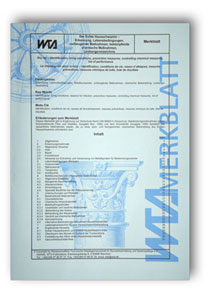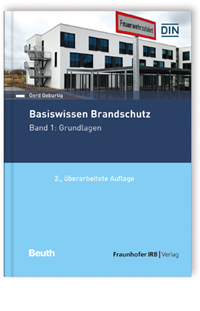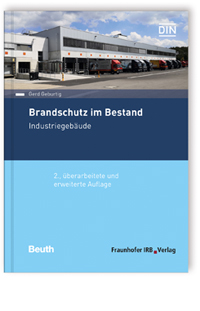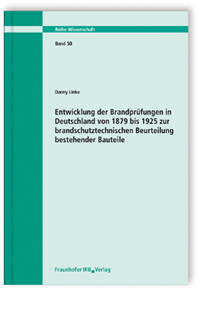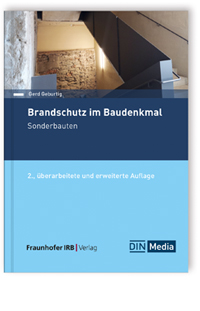Fire protection in the existing building and for architectural monuments according to WTA II: basic evaluation / analysis-phase (E-Book (PDF-Datei))
Technical commission 11 Fire Protection
WTA Guideline 11-2-23/E. English version from April 2023
Details zum Merkblatt
Reihe
WTA-Merkblätter , 11-2-23/E
Erscheinungsjahr
2024
Stand
04 / 2023
Herausgeber
International Association for Science and Technology of Building Maintenance and Monuments Preservation -WTA-
Bibliografische Angaben
17 Seiten, 1 illus.
E-Book
Fraunhofer IRB Verlag
ISBN 9783738809350
Sprache
Englisch
The decisive difference between the planning of a new building, for which a consensus must be found between the functional and design ideas of the client and the design author and the corresponding legal and technical requirements, and the planning of an existing building is that the existing building (possibly a listed building) itself is added to and possibly contradicts the aforementioned aspects. This applies to fire protection issues as well as to object planning and other specialised planning.
An intensive analytical examination of the existing building, both in terms of construction technology and building law, as a basis for all considerations and planning, is therefore necessary at an early stage. Even before this, the reason for the requested (fire protection) planning must be determined. In contrast to new construction projects, where the reason is usually always the initial construction of a building, planning for existing buildings can have many reasons. As a result, the initial situation can be complex.
This guideline, therefore, compiles the most important parameters of the basic evaluation for fire protection planning in existing buildings and monuments, looks at different initial situations and the fire protection planning services required in each case, and names the most important aspects of the archival analysis of the existing building as well as the inventory and assessment of the existing building. Furthermore, the special planning service of the fire protection hazard analysis is considered. Zur deutschen Fassung
An intensive analytical examination of the existing building, both in terms of construction technology and building law, as a basis for all considerations and planning, is therefore necessary at an early stage. Even before this, the reason for the requested (fire protection) planning must be determined. In contrast to new construction projects, where the reason is usually always the initial construction of a building, planning for existing buildings can have many reasons. As a result, the initial situation can be complex.
This guideline, therefore, compiles the most important parameters of the basic evaluation for fire protection planning in existing buildings and monuments, looks at different initial situations and the fire protection planning services required in each case, and names the most important aspects of the archival analysis of the existing building as well as the inventory and assessment of the existing building. Furthermore, the special planning service of the fire protection hazard analysis is considered. Zur deutschen Fassung
From the content:
- Basic assessment
-
- General
- Reasons for fire protection planning for existing buildings
- General framework
- Analysis of design and assessment framework
- Monument protection
- Archival and historic standing building analysis
-
- General
- Existing planning/building control approvals and verified application documents
- Legal norms and building provisions at the time of construction
- Bibliographical sources for analogous comparisons
- Fire protection survey
-
- Purpose and scope of fire protection survey
- Preparation of fire protection inspection
- Aspects of fire protection survey
- Documentation of fire protection survey
- Fire hazard analysis
-
- Reasons for and special features of fire hazard analysis
- Distinction between abstract and concrete risks
- Structure and content of fire hazard analysis
- Results of fire hazard analysis
